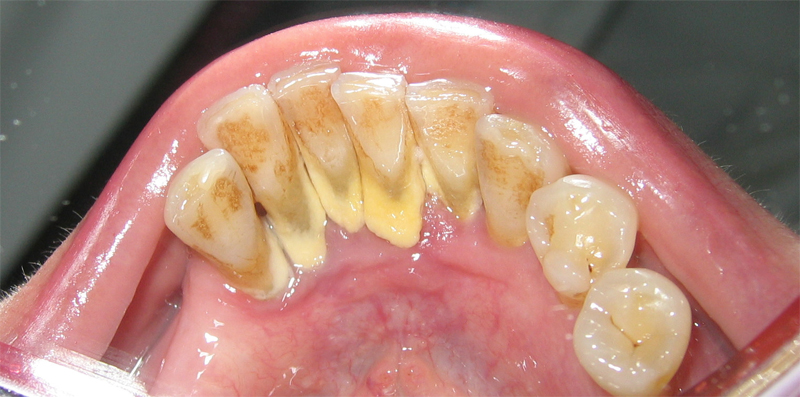 A mineralized, porous deposit that hardens and adheres to the crowns and roots of the teeth. Dental calculus, also called tartar, is caused by the accumulation of plaque. Once calculus has formed, it traps more plaque. The bacteria in the plaque produce toxins that irritate the gums and can cause the destruction of fibers that anchor the teeth to the gums. When this occurs, gingival pockets are formed between the tooth and gum, which leads to periodontal disease. The pockets may extend deeper and eventually involve the bone that holds the tooth in place, which can lead to tooth loss.
A mineralized, porous deposit that hardens and adheres to the crowns and roots of the teeth. Dental calculus, also called tartar, is caused by the accumulation of plaque. Once calculus has formed, it traps more plaque. The bacteria in the plaque produce toxins that irritate the gums and can cause the destruction of fibers that anchor the teeth to the gums. When this occurs, gingival pockets are formed between the tooth and gum, which leads to periodontal disease. The pockets may extend deeper and eventually involve the bone that holds the tooth in place, which can lead to tooth loss.
Mineralized dental plaque, located above or below the gums.
Calculus, also known as tartar, is a firm and crust-like deposit that develops on the surfaces of teeth, including the crowns and roots. It forms when mineral salts present in saliva are deposited onto existing plaque, which is a sticky film consisting of mucus and debris that adheres to the teeth.
Dental calculus is categorized into two types. Supragingival calculus is a yellowish or white deposit that develops above the gum margin, specifically on the crowns of teeth, particularly in proximity to the openings of salivary gland ducts. On the other hand, subgingival calculus forms below the gum margin, exhibiting a more uniform distribution around all the teeth, and typically appears as brown or black in color.
Both types of calculus, being firm in nature, present challenges when it comes to removal. However, the subgingival type might be particularly more arduous to eliminate due to its location and the extent of calcification.
The toxins contained within calculus can contribute to gum inflammation, which, if left untreated, can escalate to the destruction of the supporting tissues. It is recommended to have calculus regularly removed through professional scaling. Diligent oral hygiene practices can help reduce the recurrence of dental calculus.
